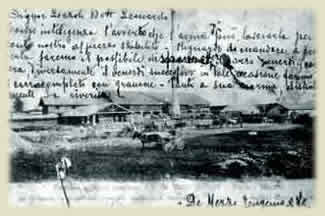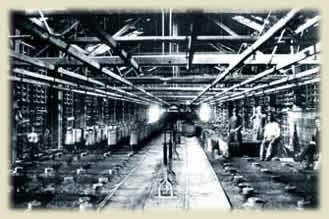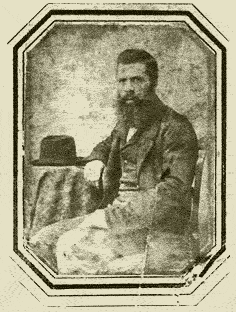
At the beginning of the former century the story of
the De Mezzo certainly intertwines with that of the friulian economy
thus becoming the main character of rural, industrial and agroindustrial
life of the times.
In 1885 Pietro De Mezzo mayor of Majano, as
well as owner of a shop in the town square and representative of the
forces of ownership of the time, had already begun working the clayey
soil to manufacture bricks along the road that leads from Fagagna
to Majano.
 |
The ancient De Mezzo brickyards
in a period postcard
|
The same soil, used to produce bricks could be used
also for other activities …. that's how diversification begins.
Agriculture of the times was strongly characterised by some basic
principles:
an appropriate rotation of crops and as autarkic principle diversified
farming, because it was better to produce a bit of everything in order
to have a bit of everything.
The farmstead grew fodder for the animals and cereals for humans,
mulberries for silkworms and vine to make wine …and finally …
grappa!
In 1890 farmstead De Mezzo owned a tavern in which
clients, while waiting for their load, could drink a fine glass of
wine and have the "busul di sgnape" as it is locally called,
that is a small glass of grappa.
Distillation was originally carried out by outside contractors, "distillers"
who worked with folkloristic mobile alembics, mounted on farm wagons.
This was the case until 1896, when the first direct fire alembic was
installed within the farmstead itself.
 |
Fire and brickworks |
At the beginning of the former century the story of the De Mezzo certainly intertwines with that of the friulian economy thus becoming the main character of rural, industrial and agroindustrial life of the times.
In 1885 Pietro De Mezzo mayor of Majano, as well as owner of a shop in the town square and representative of the forces of ownership of the time, had already begun working the clayey soil to manufacture bricks along the road that leads from Fagagna to Majano.


Pietro De Mezzo